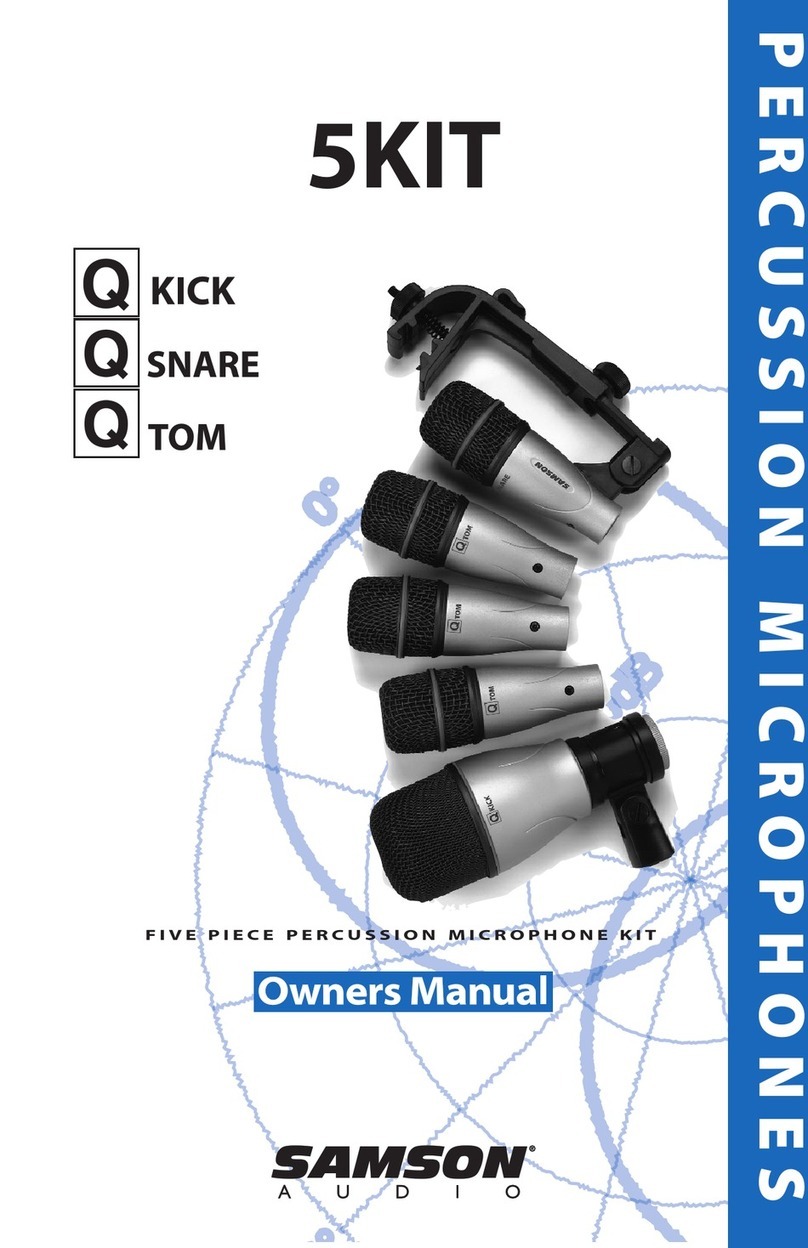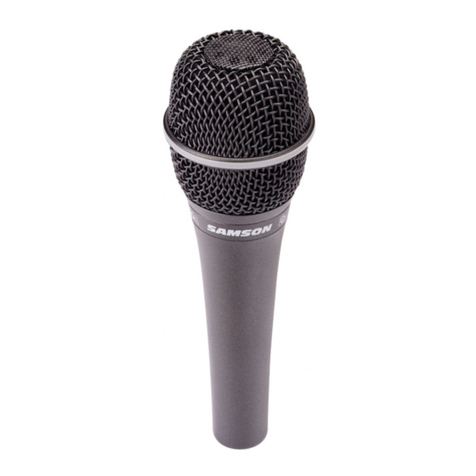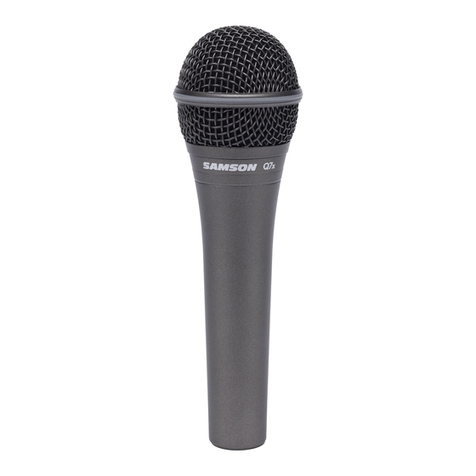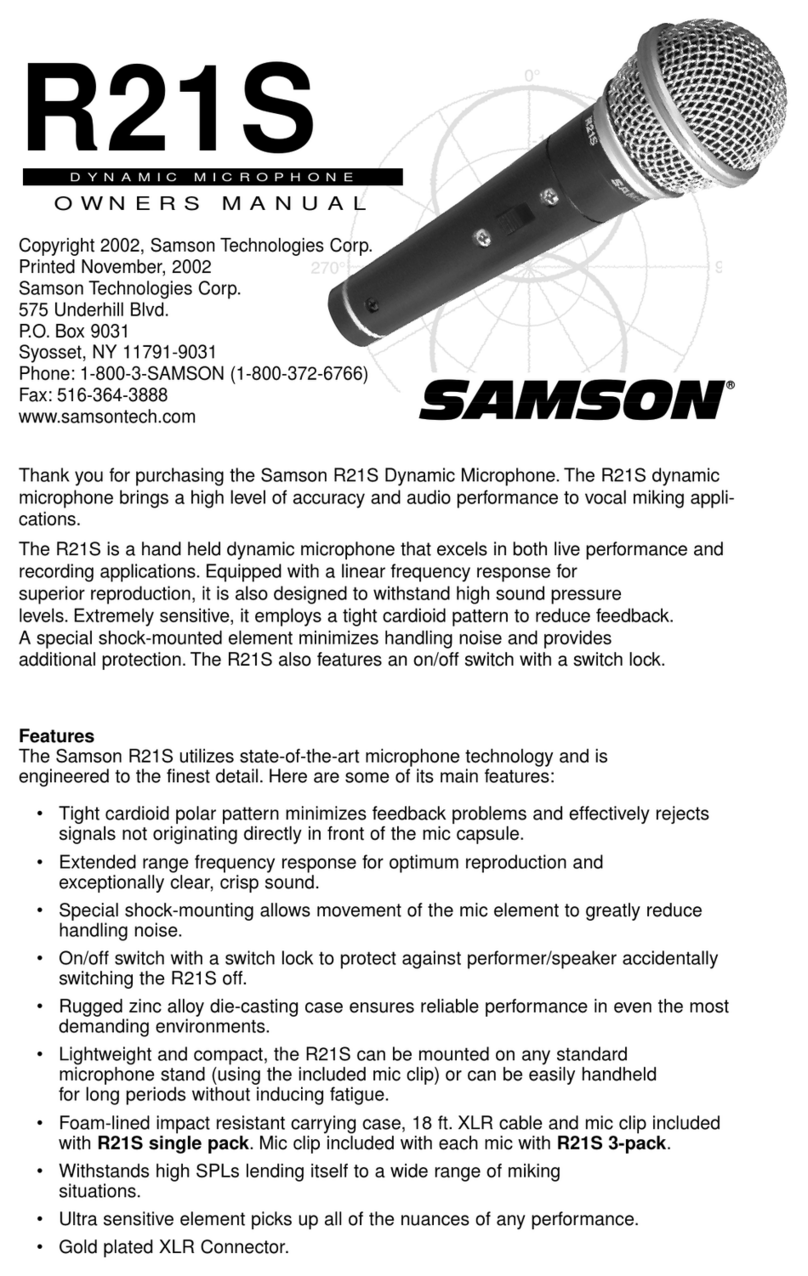Samson Meteor Mic User manual
Other Samson Microphone manuals
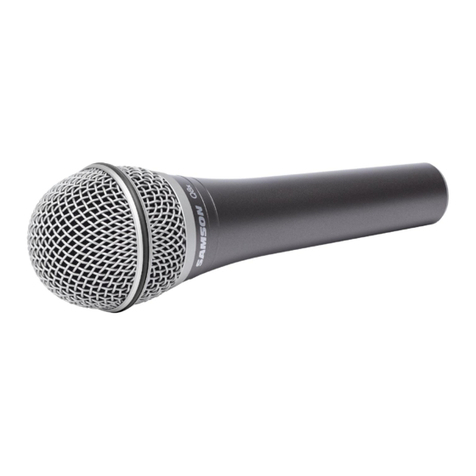
Samson
Samson Q8x User manual

Samson
Samson QEx User manual
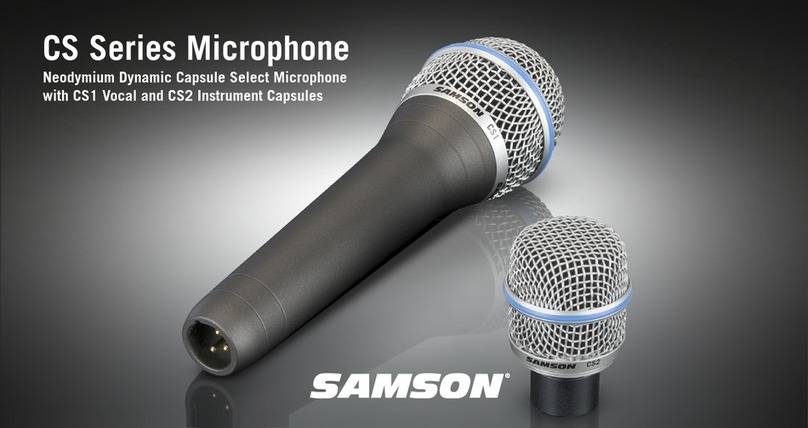
Samson
Samson CS Series User manual

Samson
Samson LM10 User manual
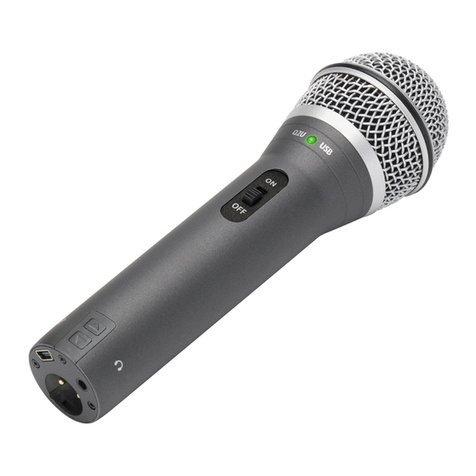
Samson
Samson Q2U Recording Pak User manual
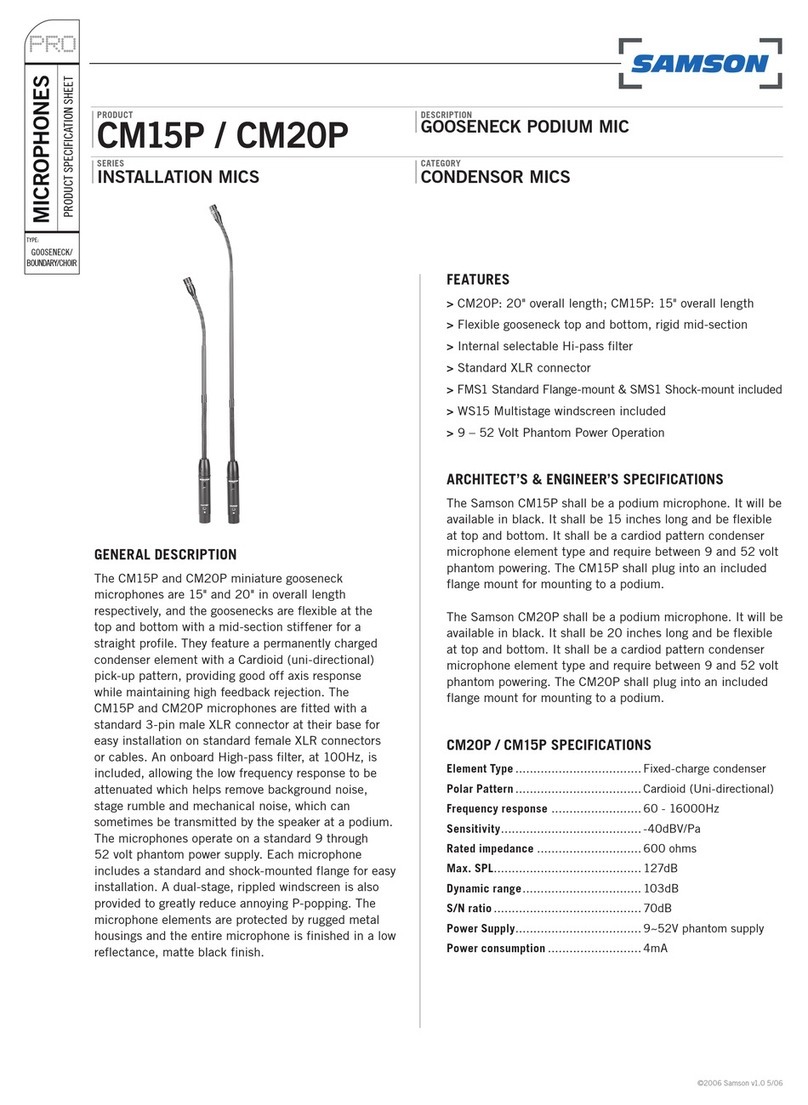
Samson
Samson CM15P User manual

Samson
Samson Q4 User manual
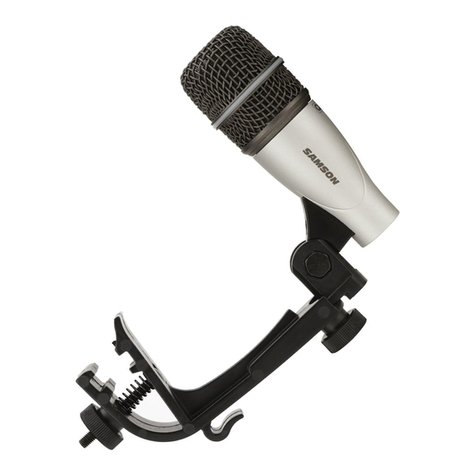
Samson
Samson Q snare User manual

Samson
Samson C01UPRO User manual
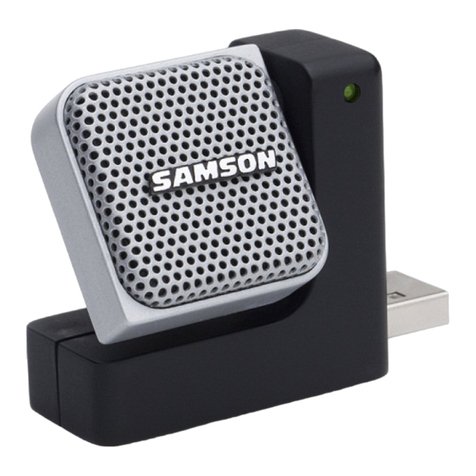
Samson
Samson Go Mic Direct User manual
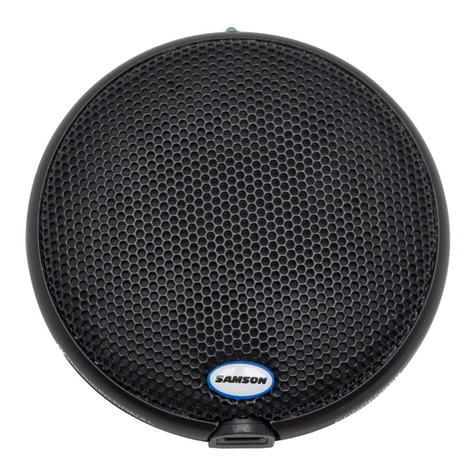
Samson
Samson UB1 User manual

Samson
Samson CM12C User manual
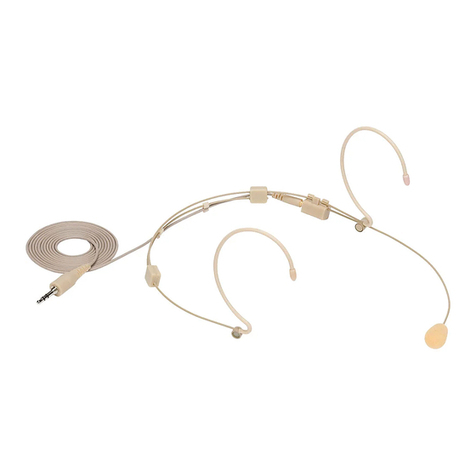
Samson
Samson DE50 Series User manual
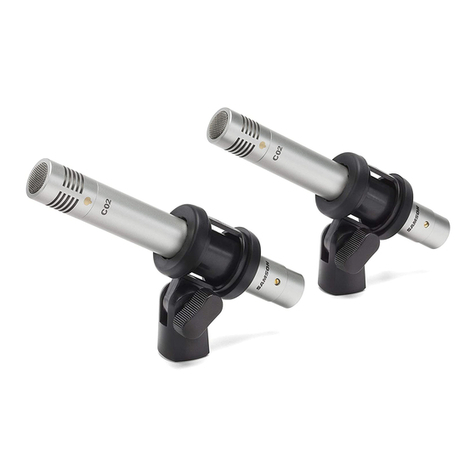
Samson
Samson C02 User manual

Samson
Samson DE50x User manual

Samson
Samson G-Track Pro User manual
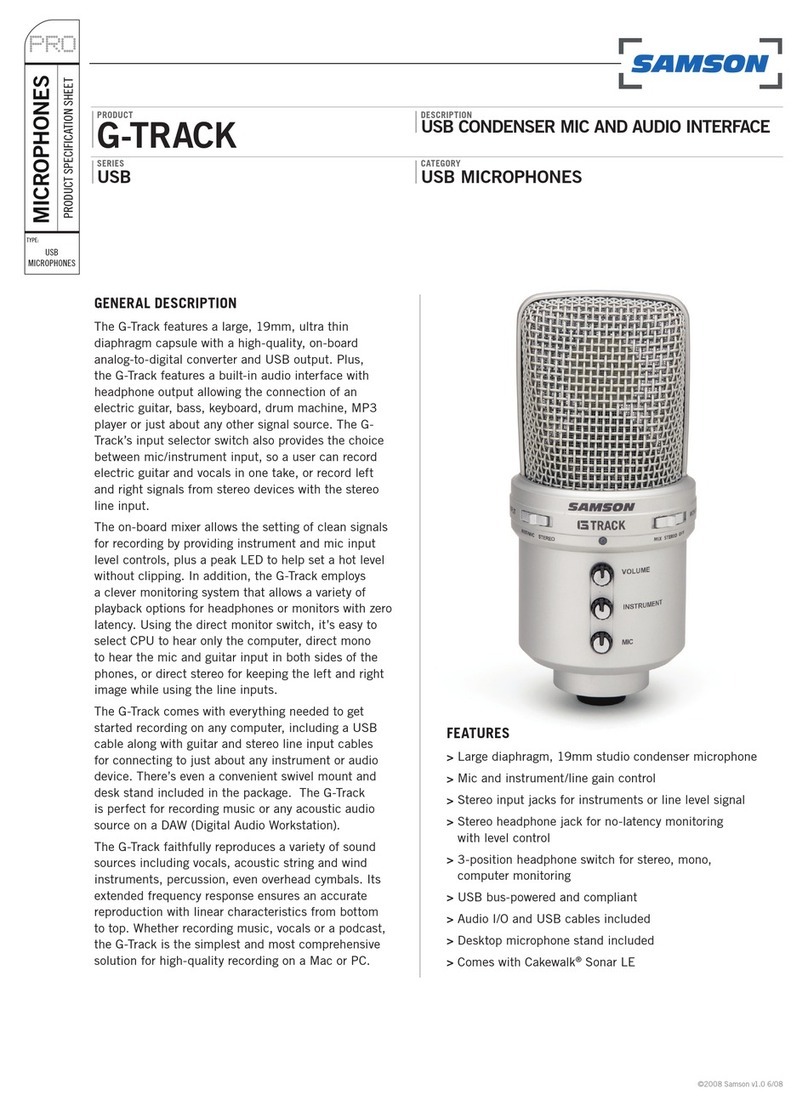
Samson
Samson G Track User manual
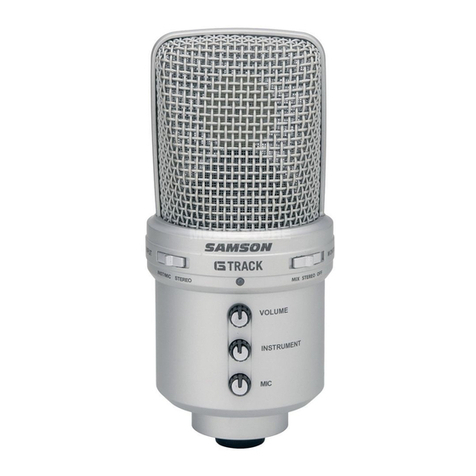
Samson
Samson G Track User manual
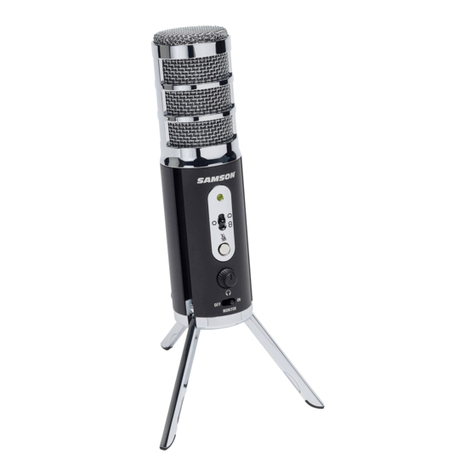
Samson
Samson SATELLITE User manual

Samson
Samson SE50x User manual
